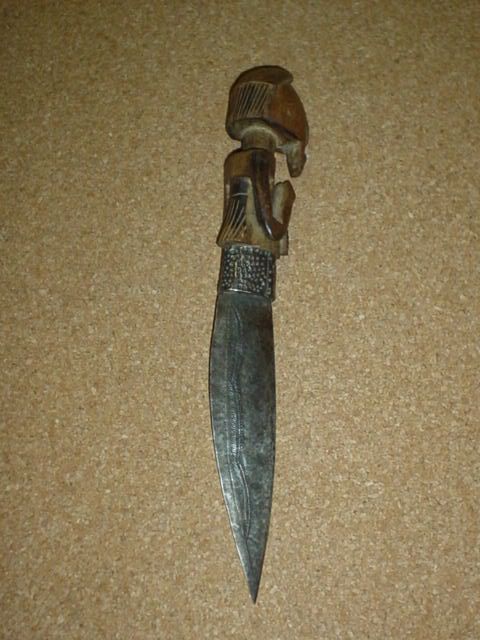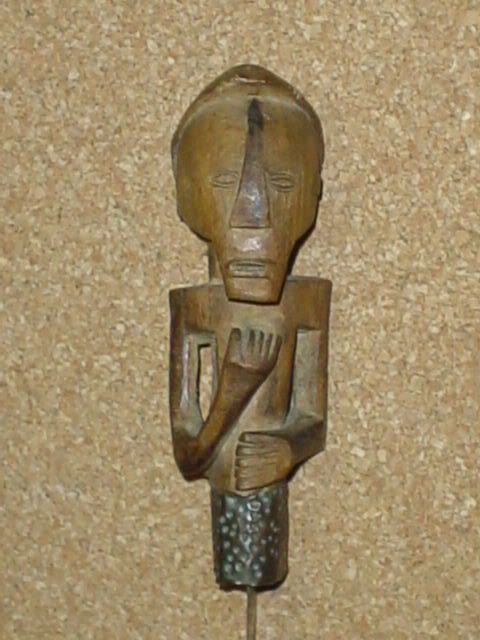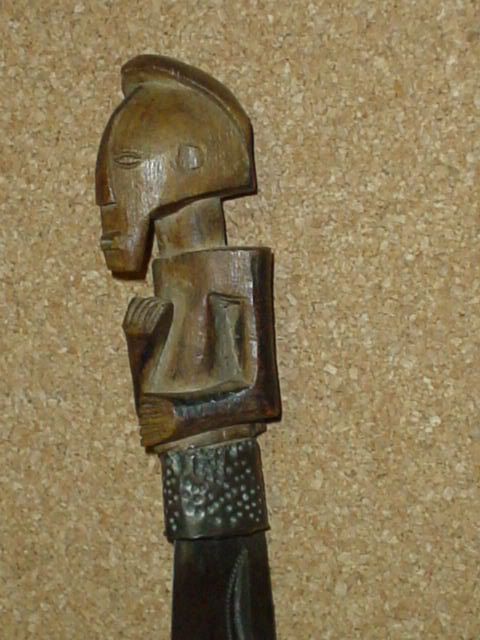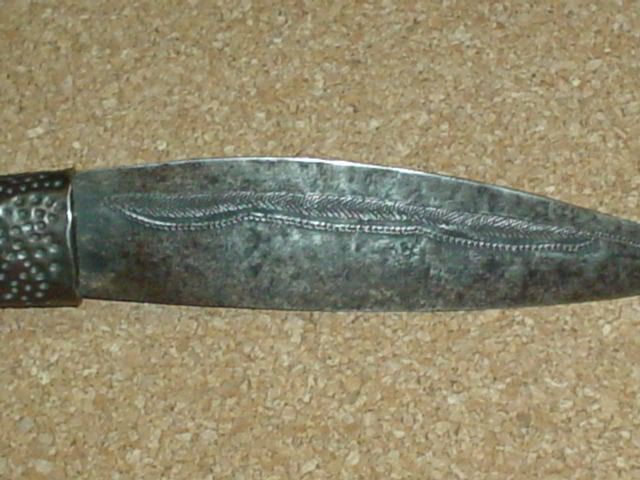
 |
|
|
#31 |
|
Member
Join Date: Dec 2004
Location: What is still UK
Posts: 5,925
|
Hi I forgot to mention I have a spear with the same sort of markings as on your knifes blade.I shall show that as a new thread in the week.Sharpen your spears and hold fast!!!Tim
|
|
|

|
|
|
#32 |
|
Member
Join Date: Dec 2004
Location: Sint-Amandsberg (near Ghent, Belgium)
Posts: 830
|
Mike, there's nothing wrong with your knife. Perhaps, the top end of the handle was once covered with copper or brass. But I have seen similar knives without copper, too.
Talking about handles, here's a nice one. It comes from the Songye-tribe in Congo. Someone once told me these particular knives were used in ceremonies surrounding circumcission.  It's a big knife to use for that purpose It's a big knife to use for that purpose  The handle is made from wood and depicts the torso and head of a typical Songye statue. The blade has some nice engravings on both sides. I have seen similar knives before and almost all have only a Songye head as handle. This one is a bit different. The blade measures 18 cm. Total length is 33 cm. And...it's quite sharp !    
|
|
|

|
|
|
#33 |
|
Member
Join Date: Dec 2004
Location: What is still UK
Posts: 5,925
|
Freddy, you have some nice things.This little knife is for a similarly unpleasant task but not on the boys.I do not think it is that old and from eastern Africa.It is strange, one side has a surface of large pits,was this by accident or not?Tim
Last edited by Tim Simmons; 4th April 2005 at 08:57 AM. |
|
|

|
|
|
#34 |
|
Member
Join Date: Dec 2004
Location: Houston, TX, USA
Posts: 1,254
|
The pits are incidental, I dare say, and were possibly on a piece of metal that was recycled to make this knife. I have seen a few of these and none of the others were so pitted. I have no information on these knives, apart from that provided by the knives themselves; do you know what tribe(s) they are from? Do you have a source for them being scarification blades? I've speculated in this direction, but that's all it's been, and I had thought perhaps, like the bracelet knives, they are used for work; they seem to be intended to be carried as finger-rings (I doubt they are held thus for use), and I would guess they have a rawhide sheath within their native setting, though I have not seen such.
|
|
|

|
|
|
#35 |
|
Member
Join Date: Dec 2004
Location: What is still UK
Posts: 5,925
|
Hello Tom ,I do not know a specific tribe origin.Things like these come from a vast region.The southern Sudan to south Uganda.These are lumped in with other Knives as wrist and finger knives.I have tried all ways of using this knife held or attached to my fingers,it does not work.Held as illustrated, a great amount of control can be obtained by wrist movement,enough for quick delicate cuts in one action.The truth be told they are most probably quite general purpuse and the unpleasant job is done with anything sharp.Tim
|
|
|

|
|
|
#36 |
|
Member
Join Date: Dec 2004
Location: What is still UK
Posts: 5,925
|
This thread keeps evolving.Nuba of the southern Sudan.
|
|
|

|
 |
|
|